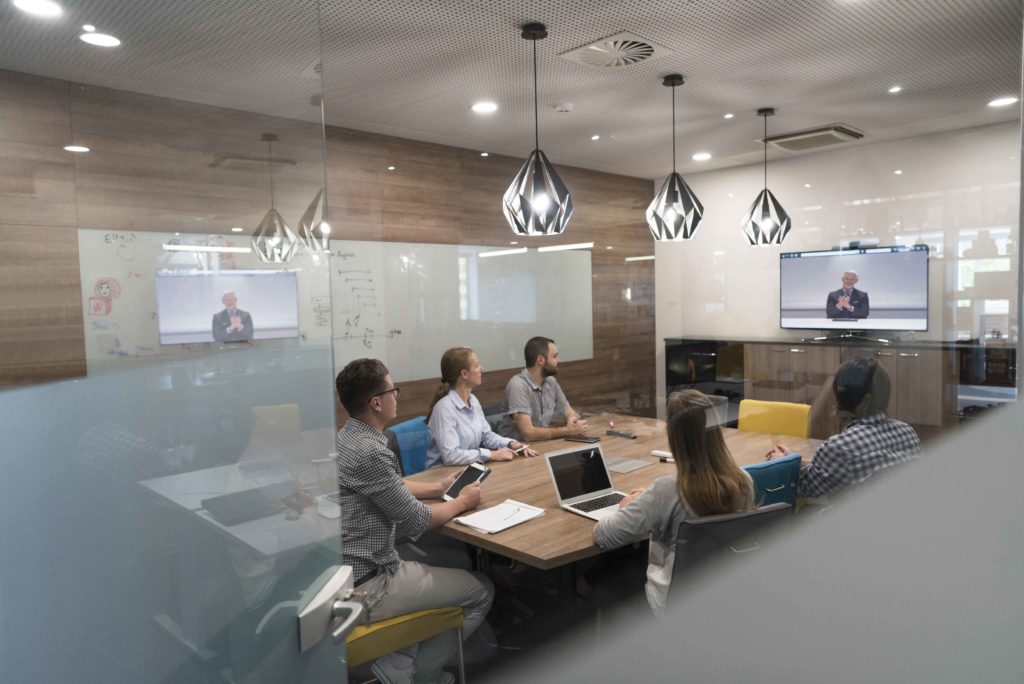Codec: The Good, The Bad, The Ugly

When videoconferencing was first introduced, it was a game changer for businesses. It became a cost-effective way to hold company-wide meetings by reducing the need for travel expenses. And it allowed global offices or telecommuters to connect on a more personal level, without the need for airline tickets or hotels. Since its introduction, teleconferencing systems have improved, and the features are almost limitless. But, if you’ve tried to update your teleconferencing set-up recently, you might have been confused by some of the finer details. ‘Codec’ is one of the terms we get a lot of questions about, so we’re here to break it down for you.
The word ‘codec’ is a combination of the words ‘coder’ and ‘decoder’. Basically, it just means that a codec can compress data for faster transmission, and decompress data that has been received—just like what happens when you’re videoconferencing. The codec compresses your video to send to the person you’re talking to, and decompresses the data that has been sent from them. A codec can be hardware based or software based, which is where we get the terms hard codec and soft codec. So, what does that mean for you and your videoconferencing system? Let’s find out!
Soft Codec
When you first think about teleconferencing systems, you’re probably thinking of soft codecs without realizing it. Software-based codecs are cloud or web-based videoconferencing systems. Think Zoom, Skype, or Go-To Meeting. They are “soft” because they do not require hard wiring to make them work. They rely on a good internet connection, computer, and a camera system.
Soft Codec Pros
The biggest benefit to soft codecs is the price. Business plans for cloud-based videoconferencing software can be pretty inexpensive depending on your company’s need. And with cloud-based software, you can shop around and find the product that has the best features for you. Additionally, soft codecs can’t be beat in terms of convenience. Getting started is as simple as downloading the software and ensuring you have the proper camera and mic, which probably came as standard features on your computer or laptop.
Soft Codec Cons
When comparing soft codecs to hard codecs (which we’ll get to later), you’ll find that soft codecs won’t have as many features as their counterpart. You’ll need to keep in mind that the more features your business requires, the higher the price will be for your subscription. And while soft codecs can be scaled up or down depending on users, there will be limitations. One of those limitations will be your equipment. Cloud-based videoconferencing takes up a lot of bandwidth, and the quality will be determined by your internet connection. Soft codecs are usually best for companies with infrequent videoconferencing needs, that use only one camera or microphone at a time.
Hard Codec
In many cases, clients don’t realize that there is an alternative to cloud-based videoconferencing. Hard codecs are hardwired, which means they rely on back-end servers to function. Since they are wired into your system, they don’t require internet or additional software. There are some benefits to this system, but there are also some downsides.
Hard Codec Pros
Hard codecs are reliable. Since they are hard wired into your system, they will (almost) always work. They also provide more features and flexibility. Hard codecs give you the option of using a cloud-based subscription service, or not, so you can choose the option that works best for you. Additionally, hard codecs are more secure than soft codecs. So, companies that have high security standards (like the government) should almost always choose the hard-wired system.
Hard Codec Cons
When considering hard codecs, you need to keep in mind that these systems aren’t cheap. Because these systems are hardwired, they take time, manpower, and equipment. Also keep in mind that these systems don’t appear overnight like cloud-based software. Installation takes time, so you’ll need to prepare ahead of time for a hard codec installation. Hard codecs are usually best for companies who videoconference often, with multiple microphones and cameras.
If you still aren’t sure which codec is right for you, ask yourself these questions:
- What features do we need?
- Is security a priority?
- How many employees will need to use the equipment?
- What’s our budget?
- What’s our timeline?
These basic questions should help you determine which codec is right for you. But if you’re still on the fence, give us a call! We can help you decide which system will work best for you, and help you get the right equipment to make your next videoconference the best it can be.

